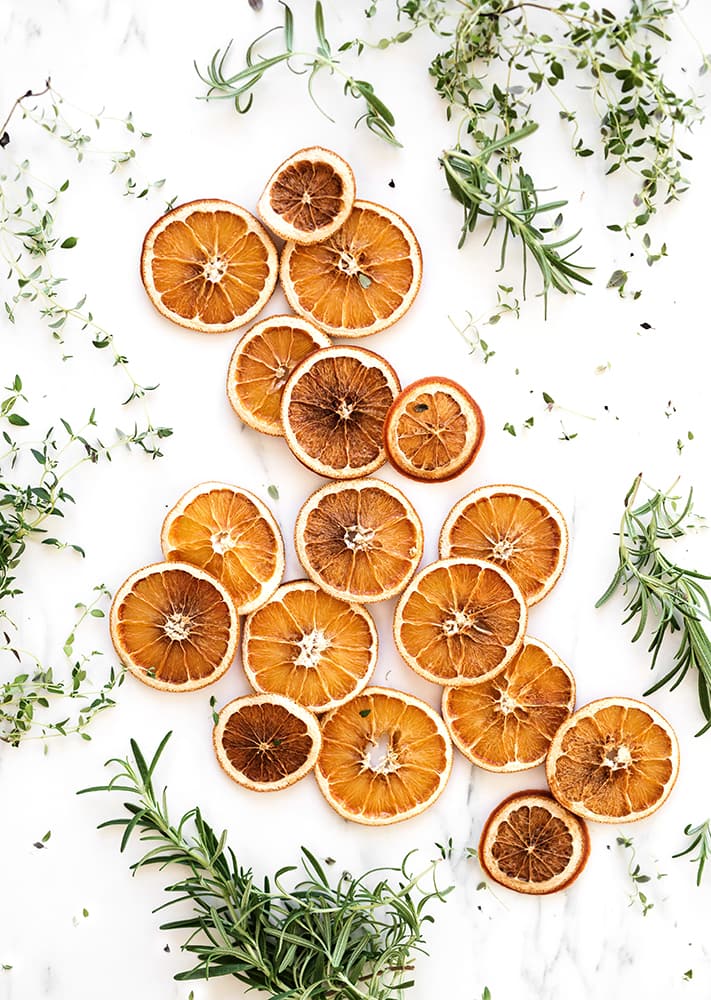


Did you know that herbs can pack quite the antioxidant punch? When we think of antioxidant foods most of think about goji berries, nuts, and dark leafy greens. However, using herbs year round can be really beneficial to our bodies as well. More recently, herbs and spices have been recognized as sources of numerous phytochemicals, which carries antioxidant activity.
Herbs are almost always often overlooked when it comes to adding a nutritional punch to a meal. For a lot of us, it’s hard to imagine basil or oregano really doing that much for our health, but that’s where we go wrong. Along with traditionally known antioxidant foods, certain herbs, spices, and essential oils derived from nutrient-dense plants are vastly high in antioxidant compounds. We’ve rounded up some common herbs that you can find just about anywhere, and then gives ideas of how you can spice up your dishes, literally.
Oregano: This herb has been around for centuries. Oregano contains beta-caryophyllene (E-BCP), an aromatic sesquiterpene that’s been a food additive due to its peppery flavor. Researchers have found that E-BCP is also an anti-inflammatory dietary cannabinoid that may utilize similar benefits to CBD. Try adding this into your pasta sauces, pizza, or salad to get a bold peppery bite.
Thyme: Sometimes an overlooked herb, thyme has a long history of being used as a medicinal healer and protector (think Roman era). This herb is great for supporting immune and respiratory systems, as well as the digestive and nervous system. It produces antihypertensive activity which can also help to lower blood pressure and cholesterol levels. Thyme is great with roasted veggies, in soups/sauces, or try adding this herb flatbread dough before baking it. It’s a serious crowd pleaser.
Rosemary: Is a savory evergreen herb that’s native to the Mediterranean. Rosemary has been noted since archaic times for its medicinal properties. Due to having a plethora of antioxidants, and anti-inflammatory compounds it’s often boasted for helping alleviate muscle pain, improve memory, boost the immune and circulatory system, and promote hair growth. Rosemary has a good source of iron, calcium, folate, vitamin A, C, and B6. Try adding some fresh rosemary to soups, proteins (roasted chicken is one of my favorite ways to use this herb), and roasted potatoes.
Basil: Much like oregano, this herb also includes E-BCP. Basil also includes a vast amount of phytochemicals like monoterpenoids, phenylpropanoids, and sesquiterpenoids. Studies show that basil has helped balance blood sugar, enhance memory, and improve oral and skin health. Add fresh basil to your soups, salads, pastas, or enjoy as pesto! See here for my gut-friendly pesto recipe.
Mint: Nothing compares to fresh mint on a hot summer’s day. Mint is commonly known for its gut healing properties. Studies have indicated that it can majorly help with indigestion, irritable bowel syndrome (IBS), small intestinal bacterial overgrowth (SIBO), and bloat reduction. Try adding mint to your smoothies (my newest obsession) and salads. You can also enjoy it as a tea. Simply boil hot water over mint tea leaves and let it steep for 5-6 minutes.
Chives: Often confused for green onions, chives are actually an herb. They come from the allium family (the same family that produces garlic and onions) and bring a milder, sweeter flavor that still has depth to it. If you’ve ever been to New York, you know how serious they are about their bagels and chive cream cheese! Chives also contain allyl sulfides, which have been shown to help with digestive problems. Chives make a wonderful addition to bagel spreads, sandwiches, and eggs.
ハーブには、抗酸化の力が秘められている事を知っていましたか? 私たちが抗酸化食品を考えるとき、ほとんどがゴジベリー、ナッツ、そして濃い緑の葉を思い浮かべるでしょう。 しかしながら、一年中ハーブを使用することは私達の身体に本当に有益であるのです。 ごく最近では、ハーブやスパイスは、抗酸化作用を数多く持つ植物化学物質の原料として認識されています。
ハーブは食事の時に栄養を足してくれるのに、ほとんどの場合見落とされがちです。 私たちの多くは、バジルやオレガノが健康のために多くの事をしてくれているのですが、なかなかその事実は周知されません。 特定のハーブ、スパイス、そして栄養価の高い植物由来のエッセンシャルオイルは伝統的な抗酸化食品として抗酸化化合物を非常に多く含んでいます。 私たちは、どこででも見つけることができるいくつかの一般的なハーブをまとめました。あなたの料理をいかに盛り上げられるかチェックしてみてください。
オレガノ: このハーブは何世紀も前から出回っています。 オレガノには、その香りの源となっている食品添加物の芳香族セスキテルペンのベータ – カリオフィレン(E-BCP)が含まれています。 研究者らは、E-BCPもCBDと同様の利点を利用できる抗炎症性食物カンナビノイドであることを発見しました。 これをパスタソース、ピザ、またはサラダに加えて、大胆にしてください。
タイム: 見落とされがちなハーブ、「タイム」は治療薬として使用されてきた長い歴史を持っています(ローマ時代)。 このハーブは、免疫系や呼吸器系、そして消化器系や神経系をサポートするのに最適です。 それは降圧作用を生み出します。そしてそれは血圧とコレステロールレベルを下げるのを助けることもできます。 タイムをロースト野菜、スープ/ソースと一緒にするととても素晴らしいです、または焼く前にこのハーブフラットブレッド生地に追加してみてください。 それはまさしく群衆の喜びです。
ローズマリー: 地中海原産の常緑のハーブです。 ローズマリーは古くから薬効があることで知られています。 たくさんの抗酸化物質と抗炎症化合物があるため、筋肉痛を軽減し、記憶力を向上させ、免疫力を高め、循環系を促進し、免疫システムを促進します。 そして髪の成長を助けます。 ローズマリーには、鉄、カルシウム、葉酸、ビタミンA、C、およびB6が豊富に含まれています。 新鮮なローズマリーをスープ、たんぱく質(ローストチキンはこのハーブを使うのに最も好きな方法の一つです)、そしてローストポテトに加えてみてください。
バジル: オレガノのように、このハーブにはE-BCPも含まれています。 バジルにはモノテルペノイド、フェニルプロパノイド、セスキテルペノイドなどの植物化学物質も含まれています。 バジルが血糖のバランスを整え、記憶力を高め、口腔および皮膚の健康を改善するのを手伝ってくれる事が研究によって示されています。 スープ、サラダ、パスタに新鮮なバジルを加えたり、ペストウとして楽しんでください。 私の腸にやさしいペストウレシピはこちらをご覧ください。
ミント: 暑い夏の日の新鮮なミントに匹敵するものは他に何もありません。 ミントは一般的に腸を癒してくれる特性がある事で知られています。 それは主に消化不良、過敏性腸症候群(IBS)、小腸内細菌増殖(SIBO)、および肥満に役立つことができることが研究で示されました。 あなたのスムージーとサラダにミントを加えてみてください(最近の私の最新のこだわり)。 お茶としても楽しめます。 ミントティーの葉の上でお湯を注いで5〜6分間でできます。
アサツキ: ネギと間違えられることが多いアサツキは、実際にはハーブです。 ネギ科(ニンニクと玉ねぎと同じ科)で、そして深みがあり、より穏やかでより甘味をもたらします。 ニューヨークに行ったことがあれば、彼らのベーグルやアサツキクリームチーズがどれほど凄いものなのか知っている事でしょう。アサツキには、消化器系の問題を解決することが証明されている硫化アリルも含まれています。 アサツキを加えるだけで、ベーグルスプレッド、サンドイッチ、卵料理を素晴らしい料理に変えてくれます。